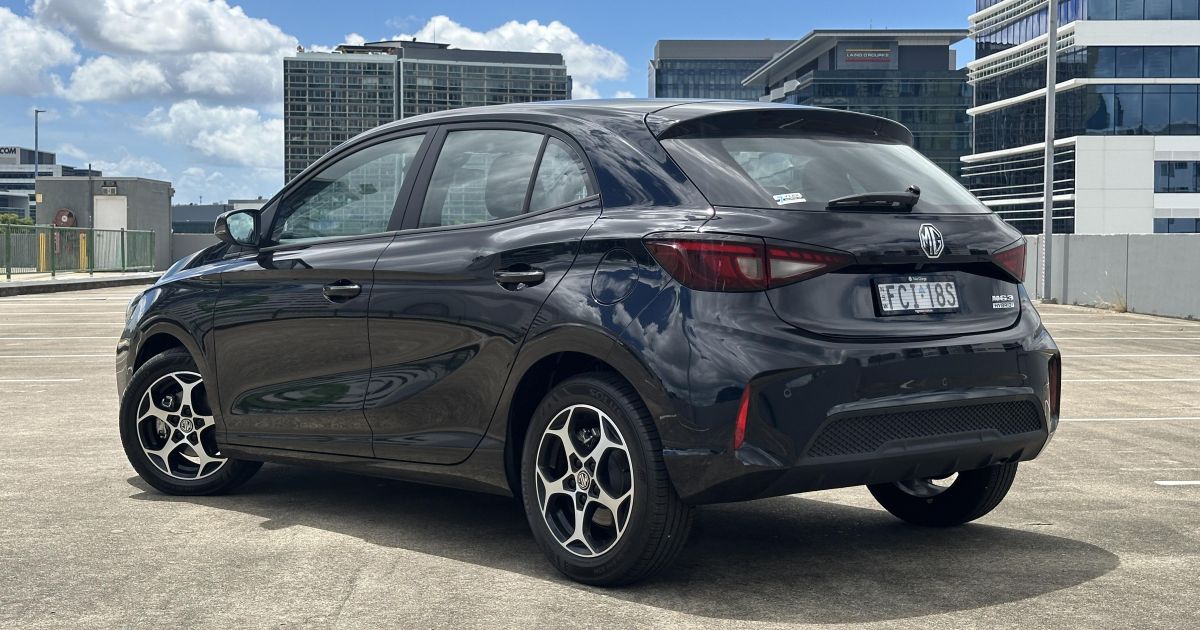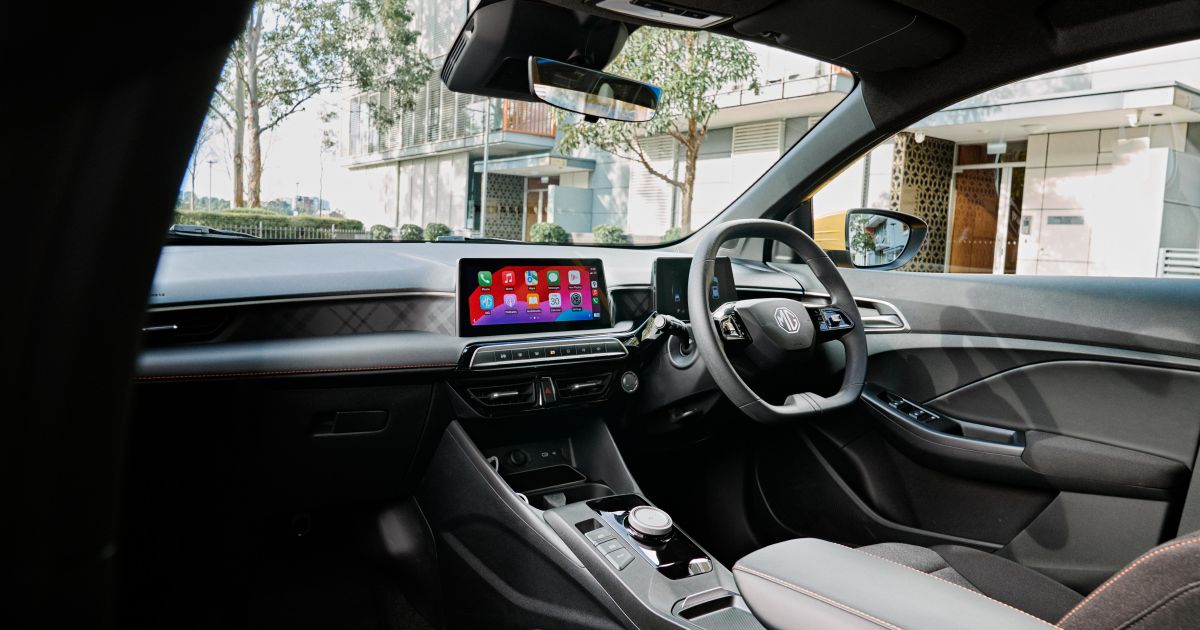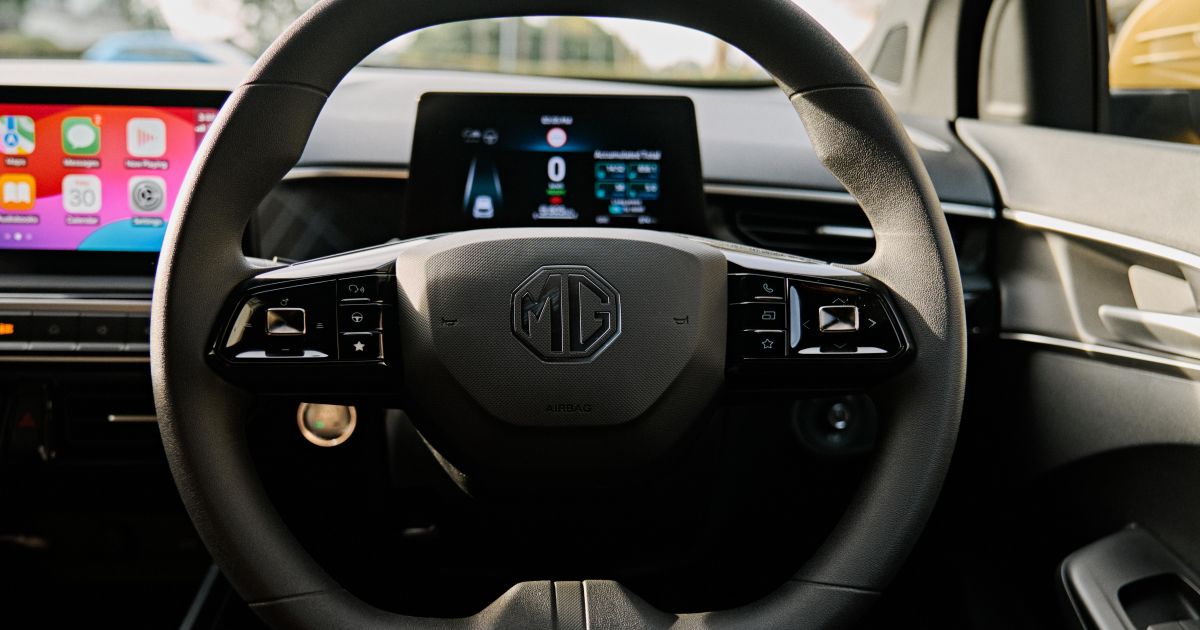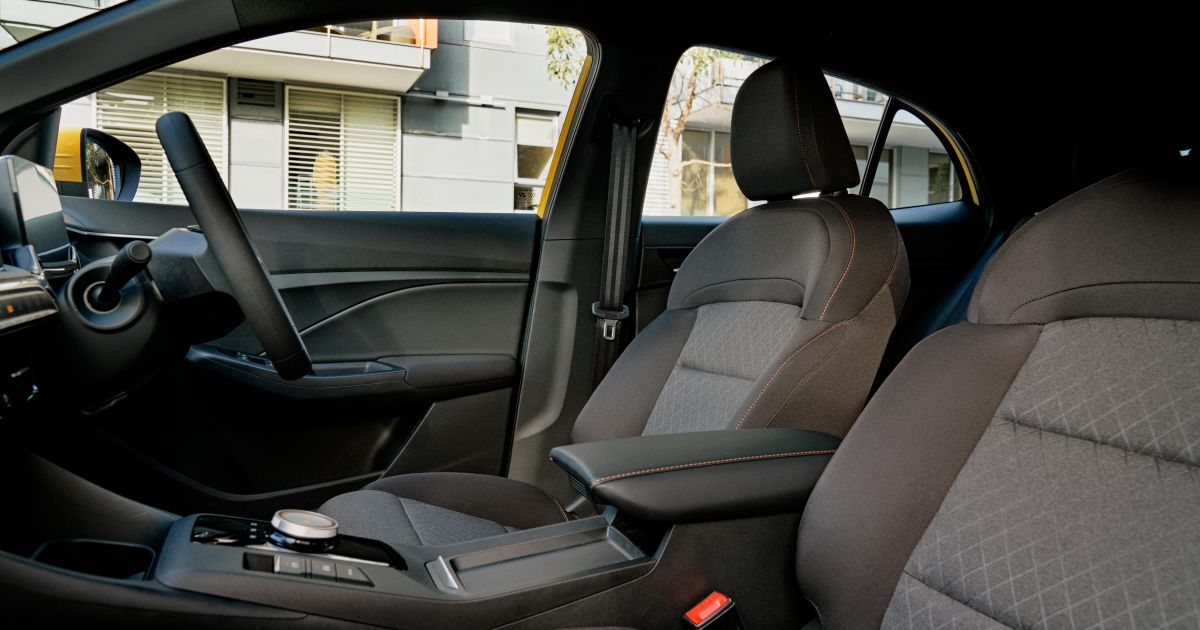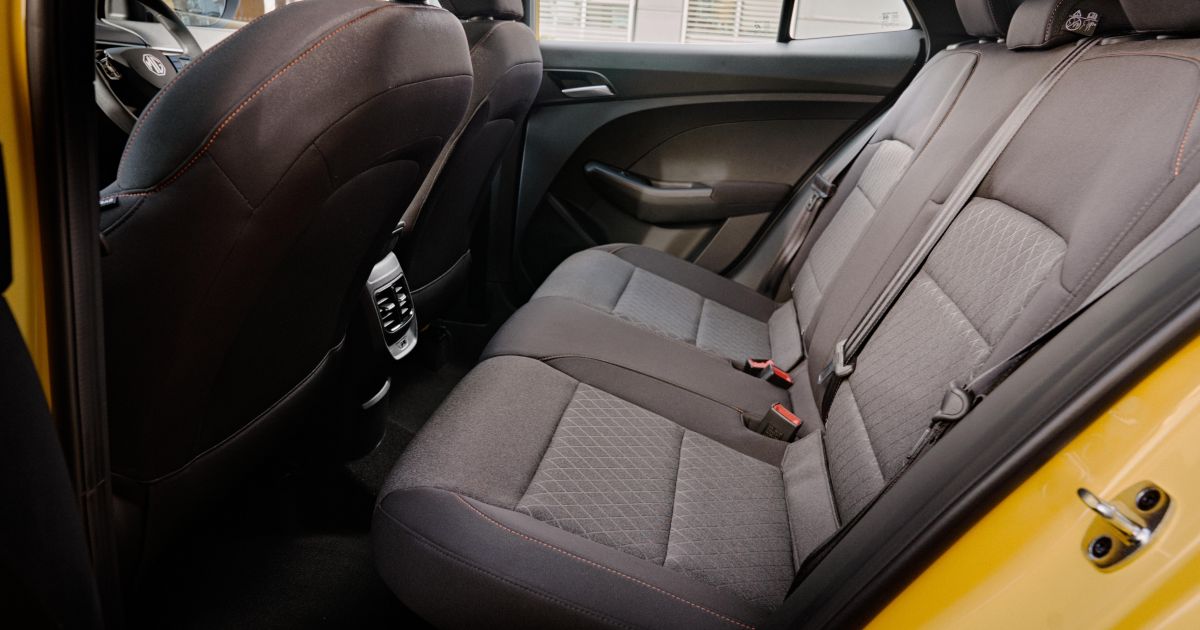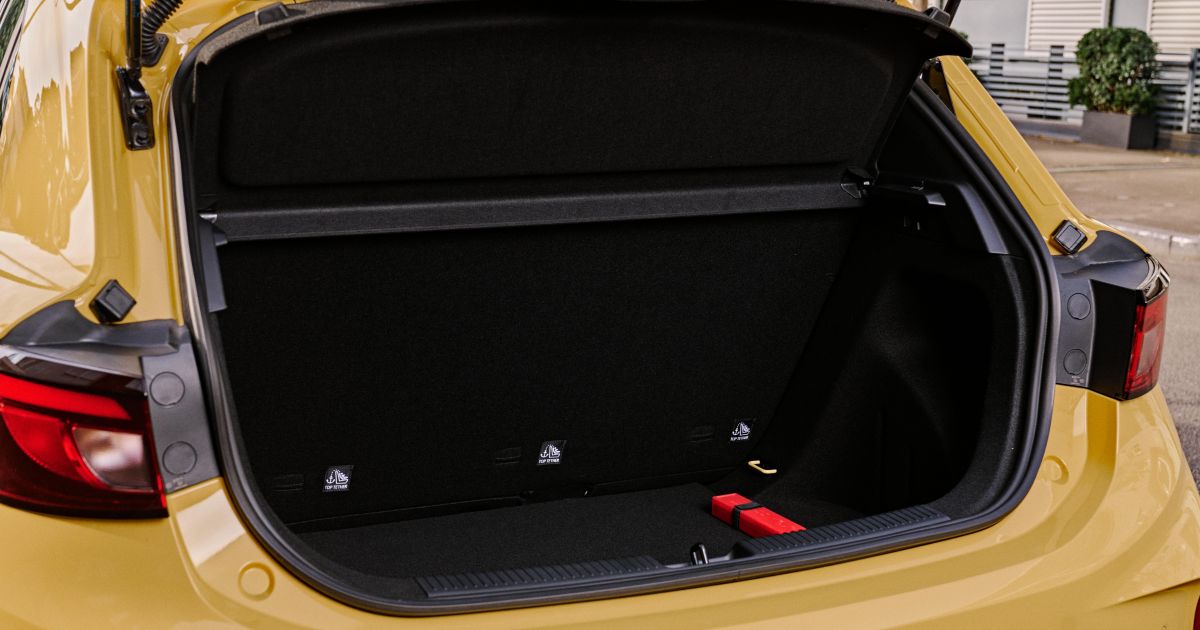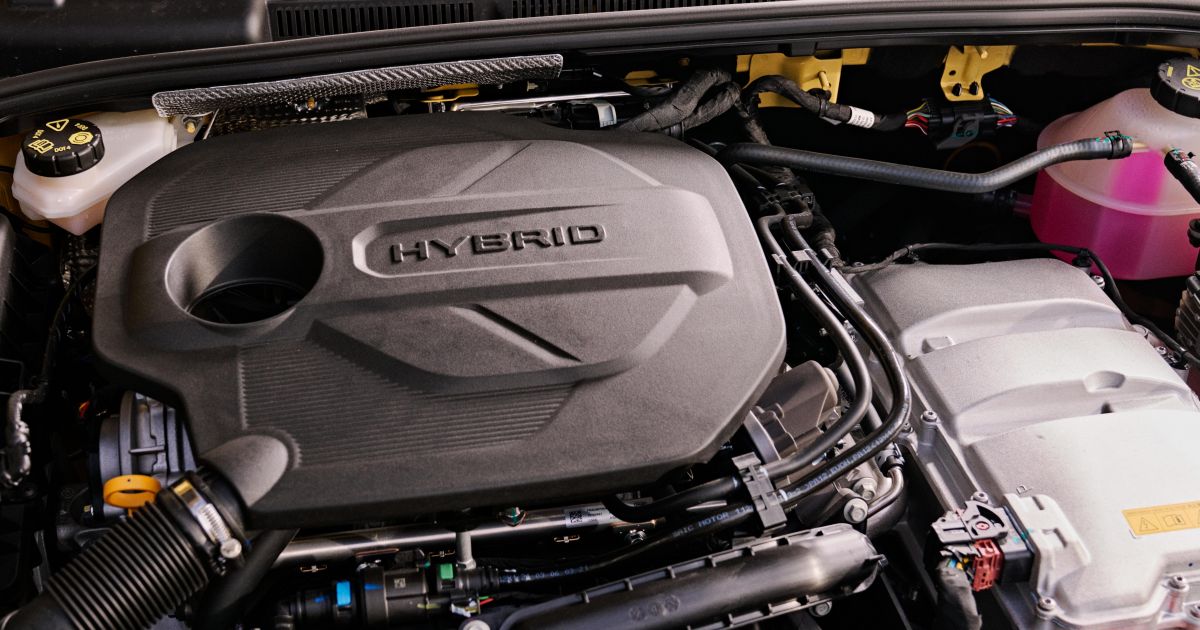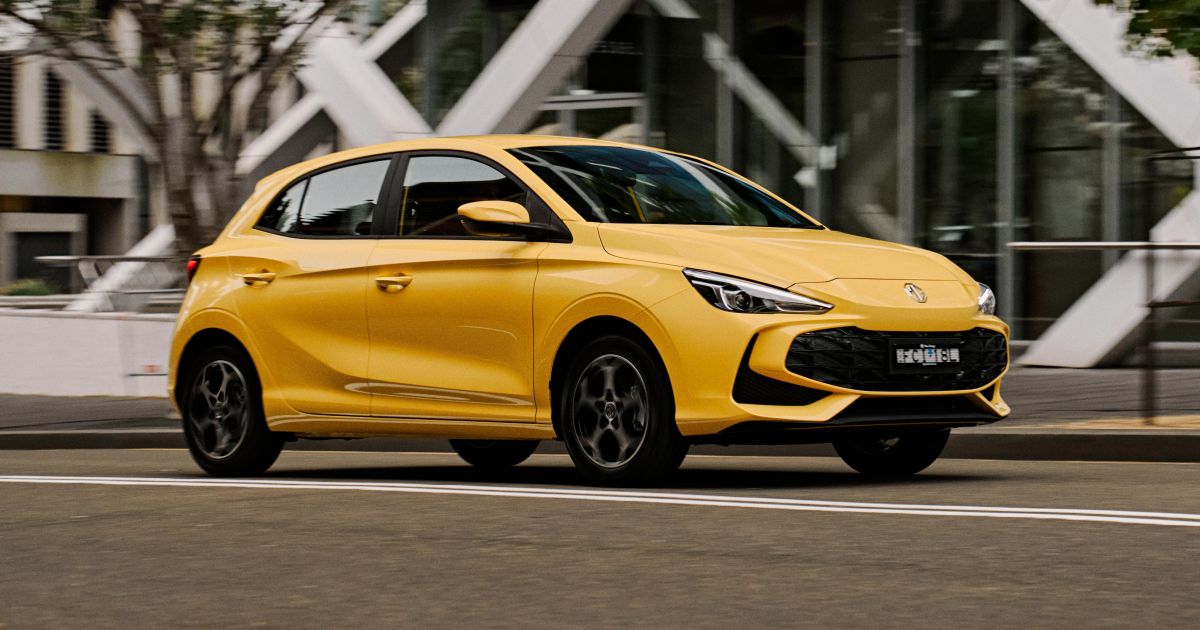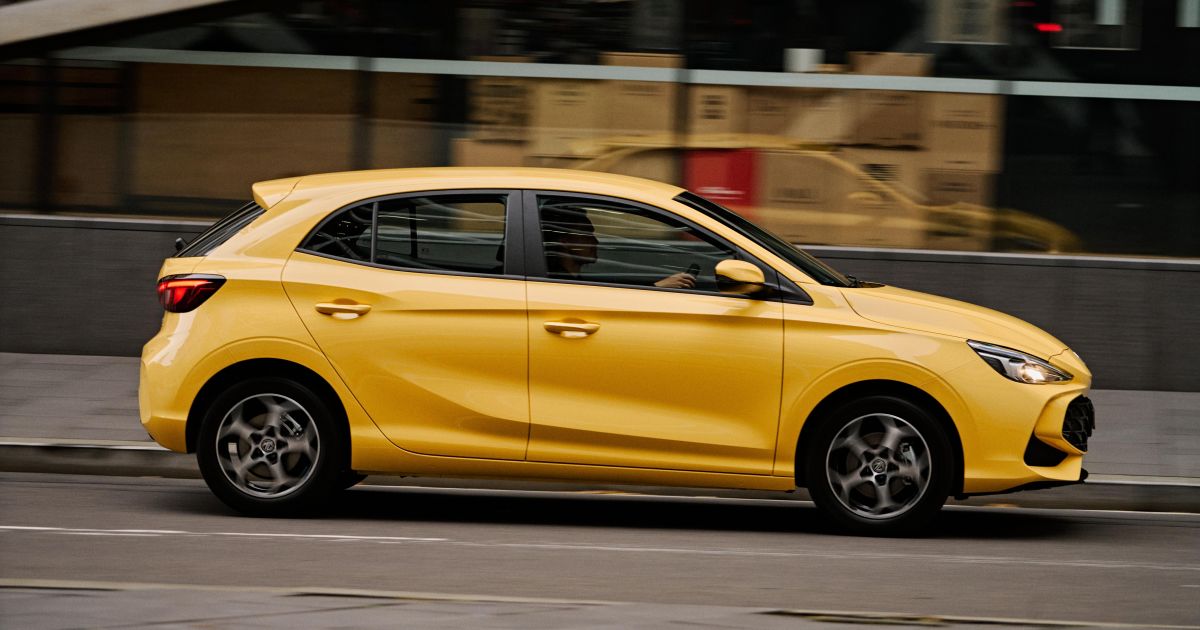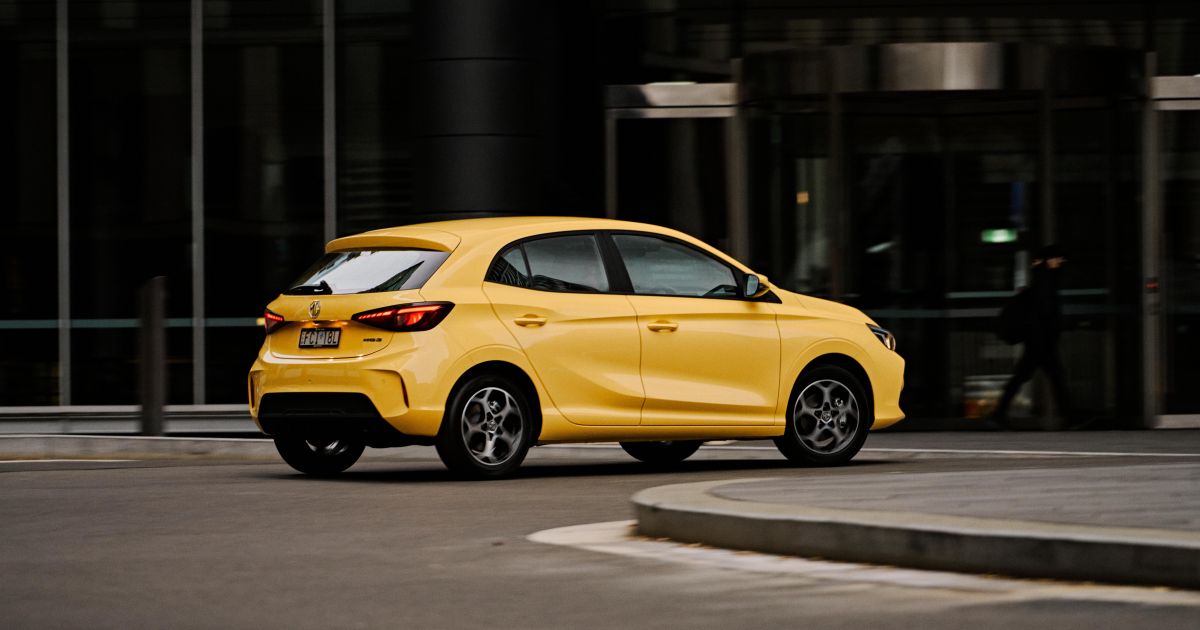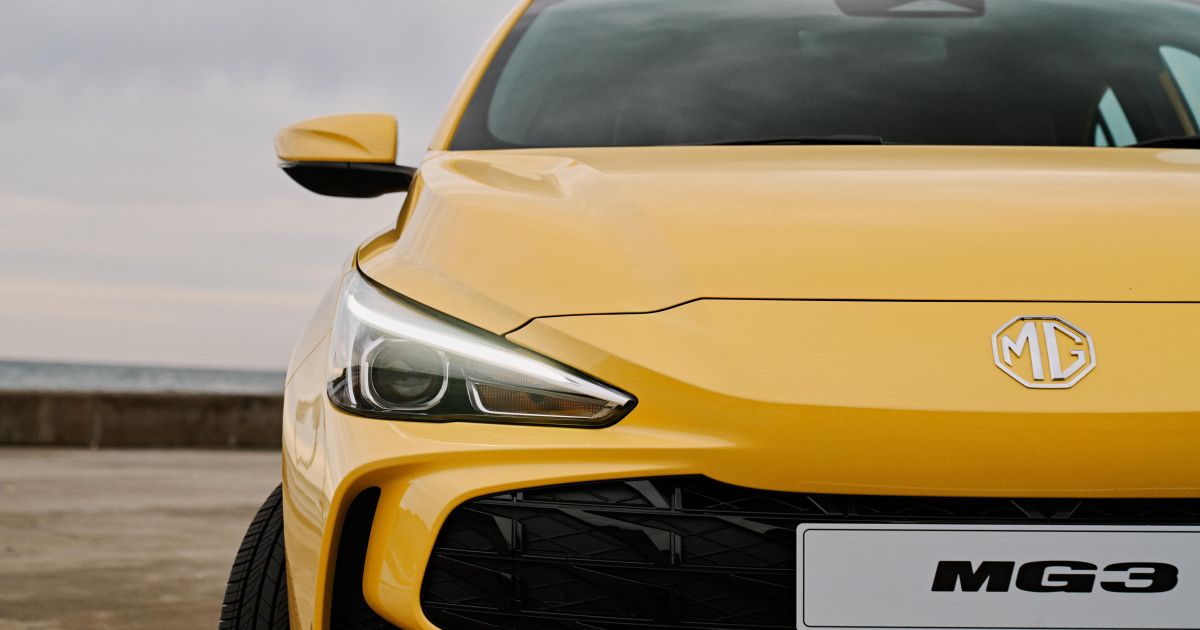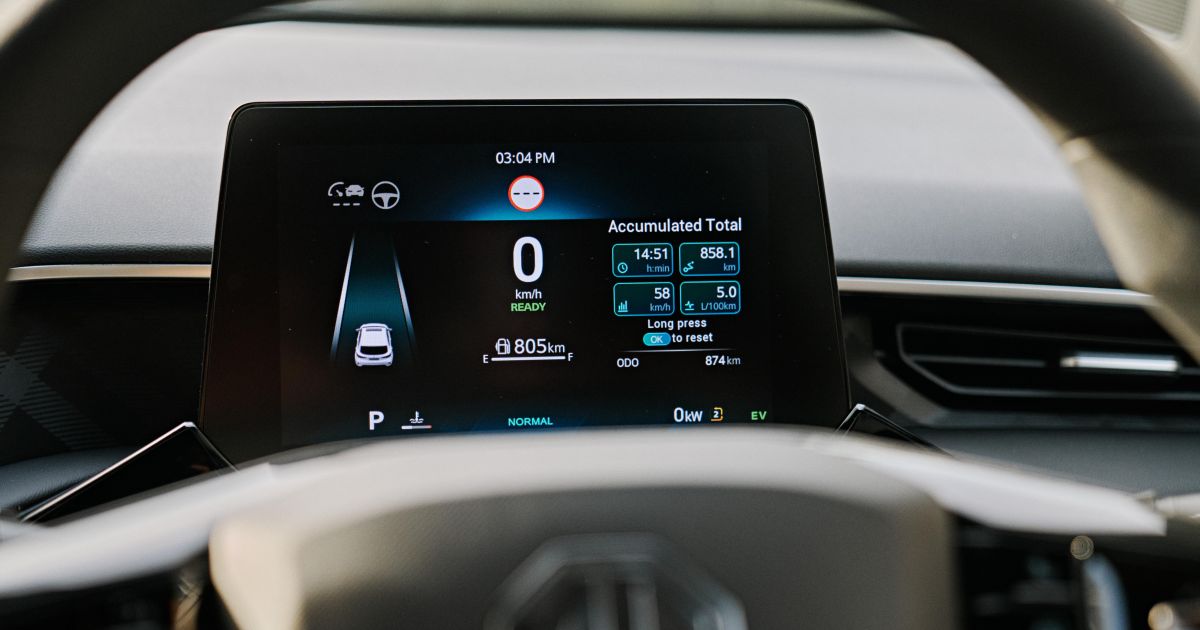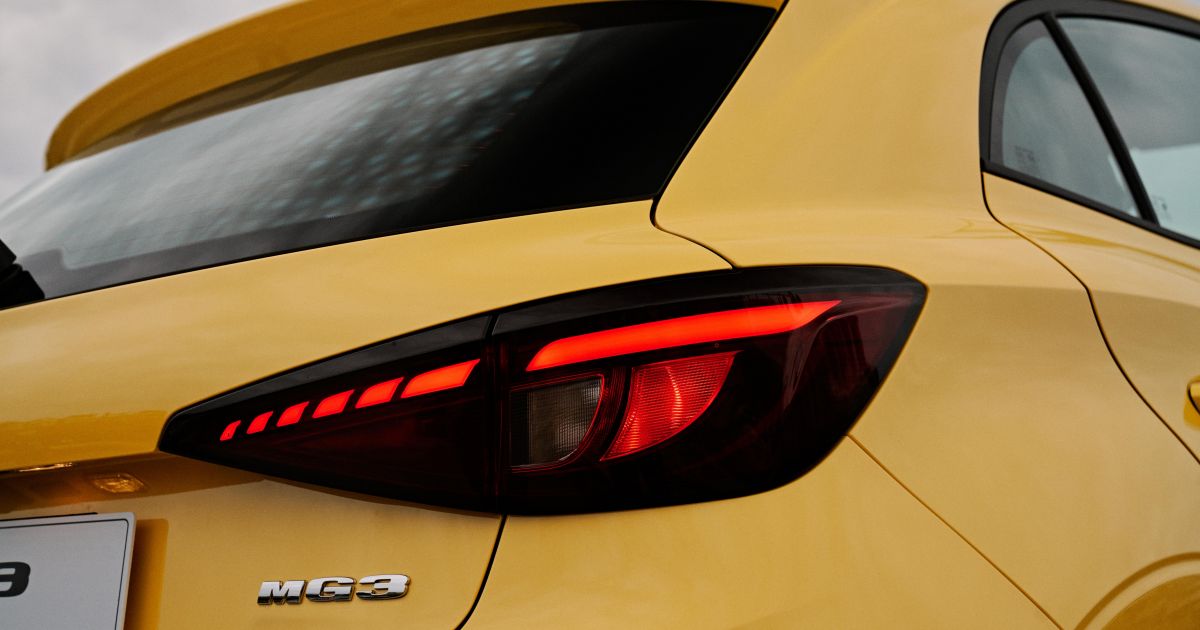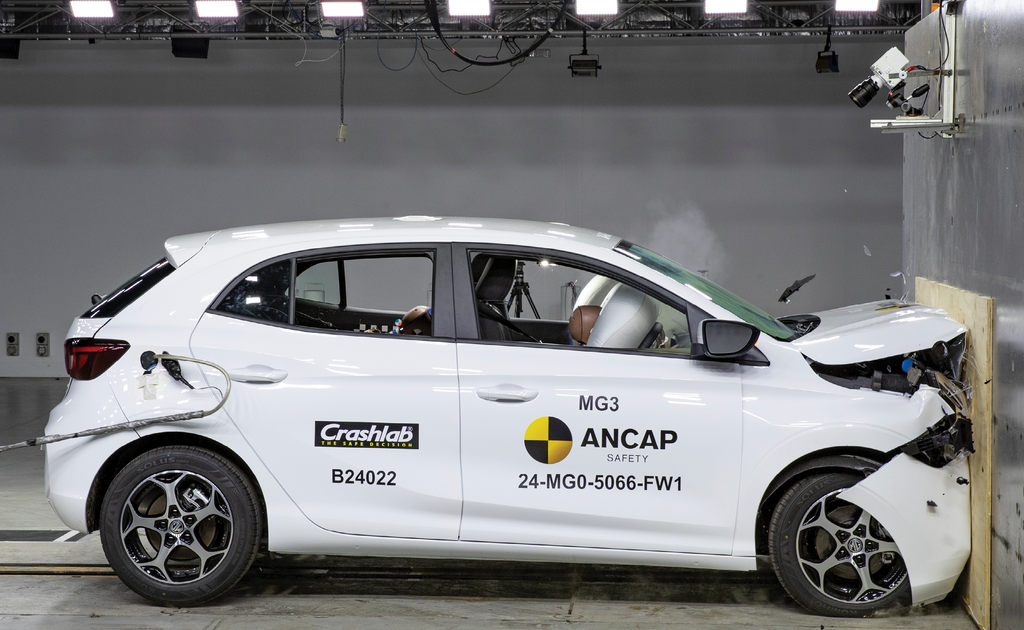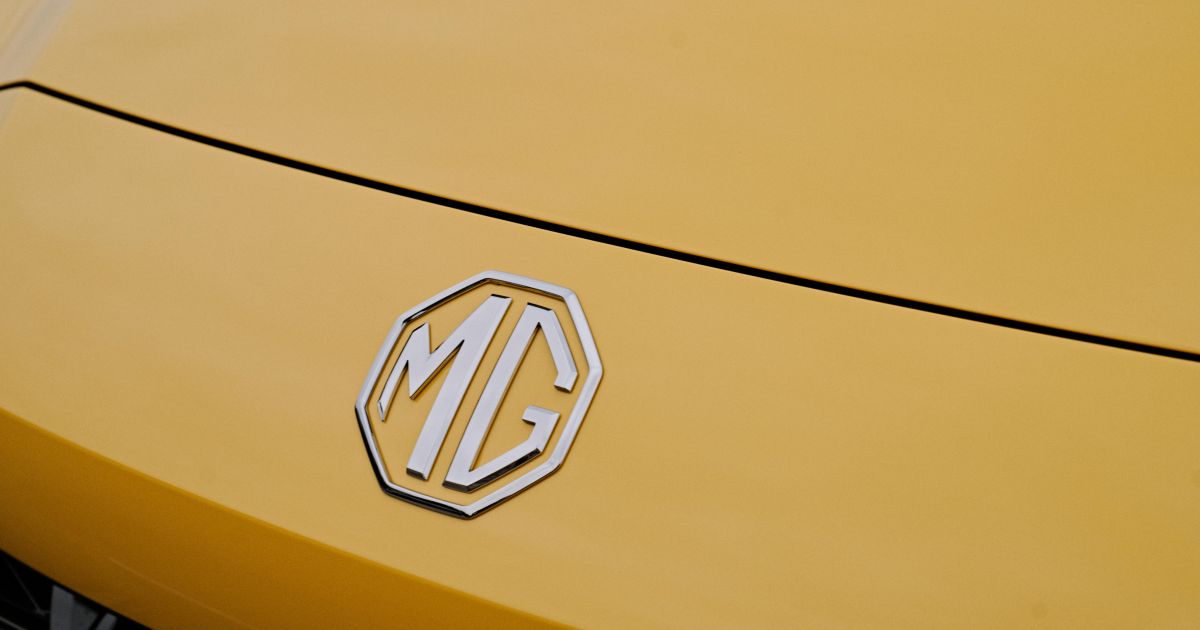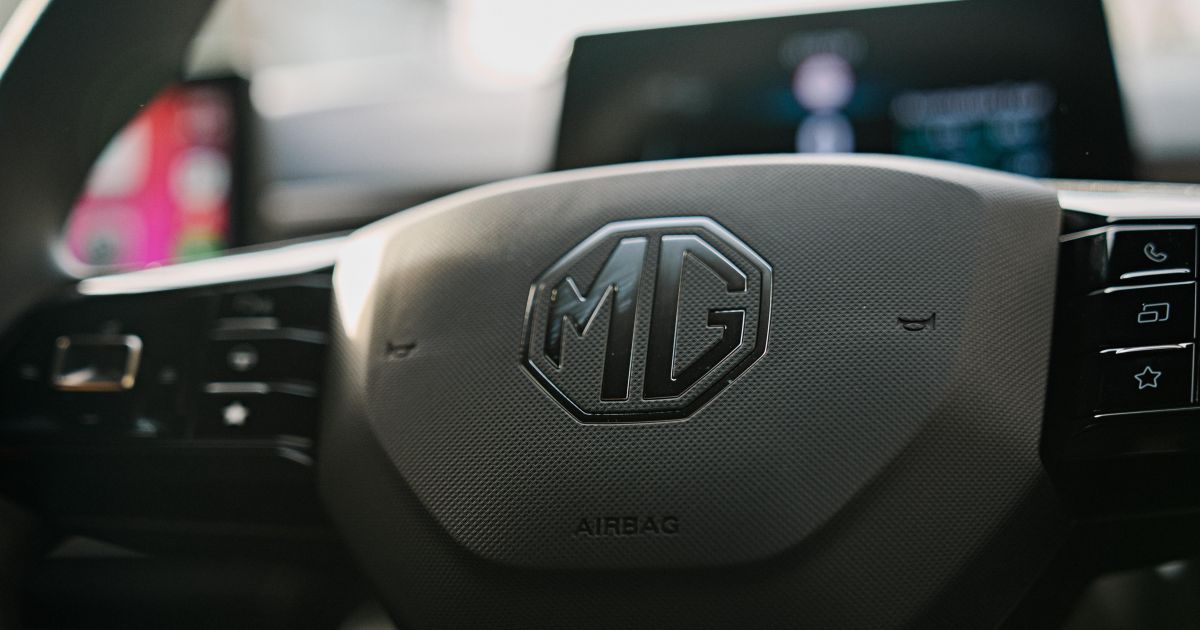The old MG 3 was cheap and fairly handsome to look at, so it’s no surprise it sold like gangbusters.
That was despite its moaning and gutless powertrain, a lack of driver assist technology and generally concerning level of safety performance, and a pervasive sense of cheapness, down to the strong petrochemical smell of its plastics.
The new MG 3, launched in Australia in 2024, is a vastly superior offering in almost every way… though it is more expensive. After chopping and changing prices a bit, the MG 3 is still more expensive than its predecessor but more affordable than rivals in this ever-dwindling segment.
It’s also one of just two vehicles in this segment to offer a conventional hybrid powertrain, with the other being the Toyota Yaris. Mind you, there are other economical options with less or no electrification, so while the segment has shrunk, there’s still plenty of competition for the MG 3.
How much does the MG 3 cost?
The MG 3 lineup consists of three petrol-powered variants and two hybrids.
| Model | Price before on-road costs |
|---|---|
| 2025 MG 3 Vibe | $21,990 |
| 2025 MG 3 Excite | $23,990 |
| 2025 MG 3 Essence | $25,990 |
| 2025 MG 3 Hybrid+ Excite | $27,990 |
| 2025 MG 3 Hybrid+ Essence | $29,990 |
The Toyota Yaris Hybrid range, for context, opens at $28,990 before on-road costs.
Use our comparison tool to see how the MG 3 Essence compares to its rivals.
What is the MG 3 like on the inside?
The MG 3’s interior has unquestionably been built to a price, but that doesn’t mean MG sacrificed style or practicality.
There’s a handsome dashboard design with a symmetrical, dual-cowl layout. The 7.0-inch digital instrument cluster and 10.25-inch infotainment touchscreen manage to have a free-standing appearance and yet look neatly integrated.
Orange stitching details add a pop of colour, while a strip of patterned trim runs across the dashboard, and has a similar pattern to the upholstery in the old MG 3. This is plastic, however.
Materials are a mix of soft-touch but not especially upscale leatherette across the front of the dash and on the door cards, and hard plastic for the tops of the dash and doors.
We’d happily sacrifice some of that soft-touch trim for softer trim on the sides of the centre console where your knees may rest, as like in many affordable vehicles it’s unpleasantly hard down here.
Likewise, we’d happily sacrifice the gloss black trim used on the centre console and centre stack, which in our freshly cleaned tester was already gathering dust.
There are some particularly cheap-looking trim pieces, like the power window surrounds, while the dashboard does bow in the middle if you press it, while the glove box lid slams open.
Countering these are well-damped stalks, while the ambience is improved through the use of a dark headliner and LED lighting for the vanity mirrors (though not the dome light).
Part of the reason the MG 3’s interior looks so neat and contemporary is because MG has sacrificed much in the way of physical switchgear. There’s just one row of physical buttons below the touchscreen, and only two of these relate to the climate control.
While we appreciate the two square-shaped toggles on the steering wheel can be programmed to control temperature and fan speed, we’d love for MG to include a couple of buttons or toggles for these on the centre stack where a passenger can easily reach.
As it stands, a passenger will need to adjust them on the touchscreen. If smartphone mirroring is being used, this means pressing the home button and then tapping the climate widget on the home screen – not too laborious, but not as easy as a physical control either.
MG’s latest generation of infotainment is more attractive and intuitive than ever, with modern graphics and an anchored shortcut bar that appears on the right-hand side of the screen unless you’re using smartphone mirroring.
It’s let down by a lack of wireless smartphone mirroring, as well as a reversing camera that looks like security cam footage from the 2000s.
The digital instrument cluster is neat, and gives off Volkswagen ID vibes.
MG designers may not have taken much inspiration from the MG brand’s back catalogue, but they appear to have been inspired by the Allegro from defunct sister brand Austin. Like that small car from the 1970s, there’s a big, oddly square-shaped steering wheel.
For a urethane tiller, it doesn’t feel too bad. But it feels far too large, and it’s awkward in operation.
The seats have attractive cloth upholstery and feel nice and soft, a hallmark of modern Chinese cars. But while they’re much squishier than rivals’, they were still supportive in more spirited driving.
Storage up front is impressive. There’s a shelf at the base of the centre stack, just below the single USB-A and USB-C outlets, which is large enough for a mobile phone.
Moving along the centre console, there are two cupholders with a removable divider, while there’s also a deep storage cubby ahead of the centre console bin and armrest. The centre console reminds us of SUVs like the Honda CR-V, such is its versatility. It is let down somewhat by the lack of a rubberised floor, though, so things will rattle around some.
The storage doesn’t end with the centre console, as the cavernous bottle holders in the doors can easily fit 1.5L water bottles from Woolworths.
Besides a lack of physical switchgear, the only gripes we have about the front of the cabin are the oddly placed door lock controls (on the dash to the right of the steering wheel) and sloping door cards that make it hard to rest your arms up high.
Step into the back and while you won’t find a fold-down centre armrest or map pockets, you will find rear air vents (hardly a given in this segment!) plus a USB outlet.
There’s a rather tall centre tunnel that eats into the legroom of the centre-seat occupant, though as with every vehicle in this segment we wouldn’t be seating three abreast back here, anyway.
There is a sufficient amount of headroom and legroom for two passengers around 180cm tall, however I found my head brushed the roof slightly if I sat back.
There are three top-tether anchor points for child seats, as well as ISOFIX points for the outboard seats.
Unusually, the rear seat folds in one piece instead of being split 60:40. Petrol MG 3s, however, offer proper split-fold flexibility.
Boot space is competitive for the class, with a capacity of 293L. But you won’t find even a space-saver spare in the MG 3 Hybrid+, as that’s reserved for petrol models. Instead, there’s only a tyre repair kit.
| Dimensions | MG 3 |
|---|---|
| Length | 4113mm |
| Width | 1797mm |
| Height | 1502mm |
| Wheelbase | 2570mm |
| Cargo capacity | 293L (seats up) |
To see how the MG 3 lines up against the competition, check out our comparison tool
What’s under the bonnet?
There’s a naturally aspirated 1.5-litre four-cylinder petrol engine offered in the MG 3, but we’ve put the 1.5-litre hybrid to the test.
| Specifications | MG 3 Hybrid+ |
|---|---|
| Engine | 1.5L 4cyl hybrid |
| Engine outputs | 75kW/128Nm |
| System outputs | 155kW/425Nm |
| Battery | 1.83kWh |
| Transmission | 3-speed automatic |
| Drive type | Front-wheel drive |
| Kerb weight | 1298kg |
| 0-100km/h (as tested) | 8.8 seconds |
| Fuel economy (claimed) | 4.3L/100km |
| Fuel economy (as tested) | 5.6L/100km |
| Fuel tank capacity | 36L |
| Fuel requirement | 95 octane premium unleaded |
| CO2 emissions | 100g/km |
| Braked tow capacity | 500kg |
While the MG 3 is economical, it’s not as thrifty as a Toyota Yaris. The official claim for the MG 3 is a whole 1.0L/100km higher than the Japanese hatch, and we weren’t able to match it.
Not only that, but the Yaris is happy to run on cheaper regular unleaded fuel while the MG 3 requires 95-octane premium unleaded.
We saw fuel consumption of 5.1L/100km on a spirited mountain run, so the MG 3 is nothing if not consistent. After a week behind the wheel and over 350km of driving, we recorded a figure of 5.6L/100km, although we saw 5.2L/100km over a standardised inner-city, suburban, and highway driving loop.
To see how the MG 3 lines up against the competition, check out our comparison tool
How does the MG 3 drive?
I can honestly say the MG 3 proved to be one of the most pleasant surprises of all the vehicles I’ve driven this year, until it delivered an unpleasant surprise.
Let’s start with the highlights. The hybrid powertrain is wonderfully punchy, and off the line this feels like an EV before the petrol engine (quietly) fires up.
That means there’s ample torque available off the line, and an impressive level of refinement. You may also be surprised to see the vehicle staying in EV mode at speeds of up to 80km/h, though likewise the petrol engine will occasionally fire up unexpectedly.
Sure, like many hybrids the MG 3 makes some grumbly noises upon startup, sounding like you’ve left your refrigerator door open for too long. But it’s impressive how smooth the transitions between petrol and electric power are, and how well the cabin is insulated from the sound of the combustion engine.
You will hear a little bit of tyre roar and wind rustle, but even when the car is revving out to 5000rpm the engine doesn’t make a racket.
The MG 3 was revving that hard because of a bizarre issue we encountered on a drive through the mountains, one we’ve experienced in the related ZS Hybrid+ before.
It occurred multiple times when the battery readout in the instrument cluster displayed just one bar. This should in theory make the petrol engine do the heavy lifting, and yet the first time this happened – admittedly on a pretty steep grade – I was pressing the accelerator pedal firmly but it wouldn’t go above 35km/h.
It gained more battery charge during the drive, but again when it dropped down to one bar the vehicle experienced a significant loss of power. This time, with my foot damn near welded to the floor, the vehicle wouldn’t go above 54km/h.
A spirited mountain drive is hardly going to be a common driving scenario for an MG 3, but we’re concerned there are far more common driving scenarios where this loss of power could occur and prove dangerous. Imagine trying to overtake another vehicle and not being able to get up to the speed limit.
A fix has been introduced for the ZS, but thus far MG has yet to announce timing for a fix for the MG 3 despite it used the same hybrid system.
That issue aside, however – and it’s an issue that can’t be simply brushed aside – the MG 3 is surprisingly enjoyable to drive. Yes, you can have fun in an MG 3.
It’s more than just the peppy powertrain that makes it enjoyable. The steering has a decent amount of road feel and nice weighting, while turn-in is sharp and grip is surprisingly good from the Kumho Solus tyres – we barely heard them squeal in more vigorous driving, and we had no real issues with front wheel spin.
There’s a touch more body roll than, say, a Volkswagen Polo, but it’s all pretty well controlled and the MG 3 can really hang in there in the corners. It makes the car surprisingly enjoyable given it’s not intended to be a sporty hatch.
The MG 3 also has a generally comfortable ride. It lapped up some particularly poorly surfaced roads, though it can still be jostled by certain things like manhole covers.
There’s a touch more float to the ride than European rivals, but overall MG has struck a good balance in terms of ride comfort.
There are three selectable levels of regenerative braking, and the instrument cluster will tell you how much energy is being recuperated. It also tells you whether the vehicle is operating in hybrid or EV mode, while you can also pull up a small energy flow readout.
The active safety and driver assist technology needs work. The lane-keep assist defaults to off, thankfully, but even with the emergency lane-keep assist left on and put on the lowest sensitivity, you can still feel the steering wheel being tugged. The lane-keep systems are simply too intrusive, and will be a significant adjustment for someone coming out of an old MG 3.
Speaking of adjustments, the lane centring – activated by pressing the steering wheel button on the steering wheel – seems to make thousands of them. Like in the larger MG 4, the system feels nervous and makes the steering wheel squirm around in your hands like you’re holding a pair of possums.
Sometimes the assists will just beep at you for reasons we can’t quite fathom, for example telling you you’ve crossed a lane marking when you haven’t.
The automatic high-beam is also overly cautious, dipping the lights even when there’s no discernible light source.
There is an overspeed alert, which would usually be annoying but the alert sound is so soft you might’t even notice it. You can still turn it off, should you desire.
What do you get?
The MG 3 is offered in three different trim levels: Vibe, Excite and Essence. The hybrid is only available in the two highest equipment grades.
There are some unusual differences between petrol and hybrid models. For example, only petrol models get tilt and telescopic steering wheel adjustment.
2025 MG 3 Vibe equipment highlights:
- 15-inch steel wheels
- Tyre repair kit
- Electronic parking brake
- Auto hold
- Automatic halogen headlights
- 10.25-inch touchscreen infotainment system
- Wired Apple CarPlay and Android Auto
- 7.0-inch digital instrument cluster
- Fabric upholstery
- 6-way manual driver’s seat
- 4-way manual passenger seat
- Single foldable second-row seat
- Single-zone air-conditioning
- Rear air vents
- 6-speaker sound system
- 1 x front USB-A outlet
- 1 x USB-C outlet
- 1 x USB outlet at rear-view mirror
- 1x rear USB-A outlet
The Excite adds:
- 16-inch alloy wheels
- Space-saver spare (petrol only)
- Push-button start
- Power-folding exterior mirrors
- 60:40 split/fold rear seats (petrol only)
The Essence adds:
- Projector LED headlights
- Rain-sensing wipers
- Sunroof
- Proximity entry
- Satellite navigation
- 1-year iSmart connectivity
- DAB+ digital radio
- PU/fabric upholstery
- Leather-wrapped steering wheel
- Sunglasses holder
- Rear map pocket
- PU door and armrest trim
- Rear reading lights
To see how the MG 3 lines up against the competition, check out our comparison tool
Is the MG 3 safe?
The new MG 3 wears a three-star ANCAP safety rating, based on tests conducted in 2024.
| Category | MG 3 |
|---|---|
| Adult occupant protection | 72 per cent |
| Child occupant protection | 74 per cent |
| Vulnerable road user protection | 76 per cent |
| Safety assist | 58 per cent |
Standard safety equipment on all MG 3s includes:
- Autonomous emergency braking
- Adaptive cruise control
- Intelligent Cruise Assist
- Lane-keep assist
- Emergency lane-keep assist
- Reversing camera
- Tyre pressure monitoring
- Front, front-side and curtain airbags
Excite and up include:
- Blind-spot monitoring
- Rear cross-traffic alert
Essence models also receive a surround-view camera but unusually only petrol models have a far-side airbag.
To see how the MG 3 lines up against the competition, check out our comparison tool
How much does the MG 3 cost to run?
MG Motor Australia offers a generous 10-year/250,000km warranty across its entire model range (including EVs and hybrids like the MG 3) for private buyers, and a seven-year/160,000km warranty for business customers.
| Servicing and Warranty | MG 3 |
|---|---|
| Warranty | 10 years or 250,000km |
| Roadside assistance | 7 years |
| Service intervals | 12 months or 10,000km |
| Capped-price servicing | 7 years or 70,000km |
| Total capped-price service cost | $2045 |
To see how the MG 3 lines up against the competition, check out our comparison tool
CarExpert’s Take on the MG 3
The MG 3 largely follows the current common Chinese car formula: squishy seats, so-so ADAS tech, and a great price.
Unlike some Chinese cars, however, it’s actually quite enjoyable to drive. The premium over the petrol engine will give you some fuel savings, but it’ll take some time for you to recoup the difference.
But don’t think of the premium over the standard petrol engine as being simply to get better fuel economy. With the hybrid, you get a more sprightly powertrain too, which makes the premium feel worth it.
That the cheapest MG 3 Hybrid+’s list price is also $1000 less than the cheapest Toyota Yaris Hybrid – not taking into account MG’s regular drive-away deals – also puts forward a compelling case for the Chinese hatch.
There’s a real caveat here, though – we simply wouldn’t buy one until the fix for the hybrid system is deployed. While we only encountered it in one particular driving scenario, it’s enough of a problem to make us reluctant to recommend the Hybrid+… at least for now.
It’s a real shame as before this problem reared its head, the MG 3 had proved to be one of the most pleasant surprises of any vehicle I’d driven this year.
Interested in buying a MG 3? Let CarExpert find you the best deal here
Click the images for the full gallery

